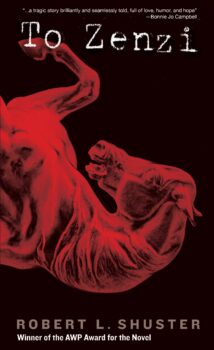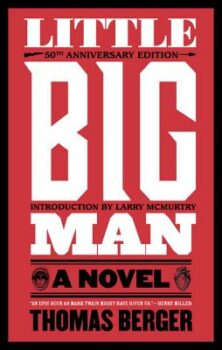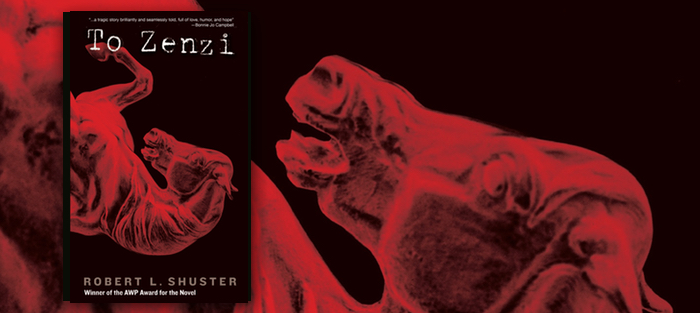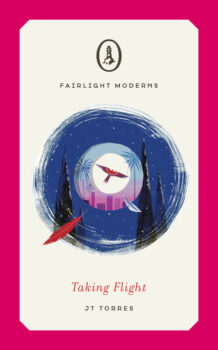The autobiography of David “Davy” Crockett appeared in 1836, the year Crockett died at the Alamo, and it quickly became a hit with the reading public. Said to have been found in Crockett’s luggage by a Mexican general, the manuscript included in its last chapter a series of dated journal entries penned at the famous fort itself. Dramatically, Crockett’s final words—“Liberty and independence forever!”—were set down on March 5th, the day before Santa Anna’s deadly siege. With the engagingly jaunty style of a picaresque, the action-packed account would not only establish Crockett as a revered figure of the frontier, it would also help create the myth of the Alamo.
But the account was entirely fake, a hoax that went undiscovered (incredibly) for almost fifty years. Richard Penn Smith, an American playwright of respectable if forgettable stage work, had managed to concoct a rather brilliant adventure, by turns comic and heroic, that also contained the trappings of a thoughtfully presented record of history: footnotes, illustrations, and a Preface by (fictitious) Alex J. Dumas.
Literary deception is a wide-ranging genre. It includes Holocaust memoirs, the Hitler diaries, the autobiography of Howard Hughes, and stories of abuse, addiction, and crime (among them, Beatrice Sparks’s Go Ask Alice, Margaret Seltzer’s Love and Consequences, and James Frey’s A Million Little Pieces and its sequel). All these accounts gained their notoriety because their compelling or sensationalistic content managed, at first, to appear authentic, but were later exposed as fabrications. Which of course raises several questions: How would these works have been initially received if they’d been labeled as fiction? Does knowing a first-person narrative is fiction alter, or even negate, our sense of the described experiences being “genuine” or “true-to-life”? Does our emotional engagement change? Is David Copperfield, which Dickens called “a very complicated weaving of truth and invention,” less affecting than an actual autobiography?
 These questions were ones that informed the writing of my own novel, To Zenzi, which might be included in that category of fiction that mimics, and sometimes spoofs, literary deception—both as a means of interrogating and claiming authenticity. In my novel, eighty-four-year-old Tobias Koertig recounts his time, as a German boy of thirteen, in the apocalypse of 1945 Berlin, in the last desperate weeks of the war. As I began writing, as ideas came to me through my research, the story started to accumulate a number of strange events that verged on the fantastical. Because Koertig’s story is essentially a confession, and because I was inserting the boy into history and into encounters with well-known figures of the time, I wanted to give it all a high degree of verisimilitude. Everything, especially the passages where things turn absurd, needed to sound plausible. Accurate historical detail was essential, as was a reliable narrator. But to further create the sense of the real, I wanted an “outsider’s” stamp of approval—just as Richard Penn Smith had invented for his Preface. It would entail my own bit of literary deception.
These questions were ones that informed the writing of my own novel, To Zenzi, which might be included in that category of fiction that mimics, and sometimes spoofs, literary deception—both as a means of interrogating and claiming authenticity. In my novel, eighty-four-year-old Tobias Koertig recounts his time, as a German boy of thirteen, in the apocalypse of 1945 Berlin, in the last desperate weeks of the war. As I began writing, as ideas came to me through my research, the story started to accumulate a number of strange events that verged on the fantastical. Because Koertig’s story is essentially a confession, and because I was inserting the boy into history and into encounters with well-known figures of the time, I wanted to give it all a high degree of verisimilitude. Everything, especially the passages where things turn absurd, needed to sound plausible. Accurate historical detail was essential, as was a reliable narrator. But to further create the sense of the real, I wanted an “outsider’s” stamp of approval—just as Richard Penn Smith had invented for his Preface. It would entail my own bit of literary deception.
Looking for guidance in fiction, I went back to Lolita, remembering my first encounter with Nabokov’s infamous book. Long ago at the tender age of twenty-one, in a college literature course, I was confused by its opening, and wondered if the notorious novel was not really a novel at all. That’s because Nabokov, always the prankster, had fooled that young innocent reader. You will remember, of course, that the book does not begin with those famous lines— “Lolita, light of my life, fire of my loins”—but with a Foreword by John Ray, Jr., Ph.D., some sort of authority on psychology chosen by Humbert Humbert’s lawyer to edit the manuscript. “Save for the correction of obvious solecisms and a careful suppression of a few tenacious details,” Mr. Ray writes, “this remarkable memoir is presented intact.” That nicely mimicked pomposity of many a musty Foreword (which Nabokov would repeat in Pale Fire) had suckered me in, and I missed (for a while, anyway) the intended lampoon.
Around the same time, I had a similar experience with the stories of Jorge Luis Borges, in a collection titled Labyrinths that was circulating then. What was I to make of his weird essay-like constructions—“Pierre Menard, Author of the Quixote,” or “Three Versions of Judas,” for example—with their dense intellectual discussions, obscure literary references, long footnotes, and, above all, the authoritative tone of incontestable erudition? My mind skittered between the apparent truth and the bizarre, unable to settle on either side, which both delighted and confounded me. In the book’s genuine introduction, the genuine James E. Irby describes such a mix: “We are transported into a realm where fact and fiction, the real and the unreal, the whole and the part, the highest and the lowest, are complementary aspects of the same continuous being.” That sounds a lot like the intriguing and unsettling time between the end of a dream and fully waking—when the bedroom comes into focus, but the wild story the brain has conjured remains vivid and believable. That’s the state that Borges put me in, and it’s no wonder that my memory superimposes my first readings of “Tlön, Uqbar, Orbis Tertius” and “The Secret Miracle” on the dorm-room smoking of pot.
Years later, maybe a little wiser, I found myself trying to correct someone else’s misimpression. At a bar, four of us were having a discussion of books. One woman was telling me how much she loved Arthur Golden’s Memoirs of a Geisha, which had just been published, and it became clear she believed the first-person account, by Nitta Sayuri, was a real memoir. I told her it was actually a novel, but she insisted it wasn’t, and I soon backed off, not having yet read the book and wondering if maybe I’d gotten it wrong. In fact, Golden had fooled a lot of people. Possibly these readers had overlooked three words on the cover (“a novel by”), and possibly they hadn’t perused the Acknowledgements (who does?), where the very first sentence confirms that “the character of Sayuri and her story are completely invented.” But credit must go to the author. He employed a skillful, unadorned, memoir-like style that left little room for disbelief. What’s more, a sly bit of front matter—a Translator’s Note—has a professor of Japanese History, Jakob Haarhuis, explaining how he came to know Sayuri and hear her story. The note, mirroring Golden’s own experience in interviewing the real Mineko Iwasaki, a former geisha, isn’t anything like Nabokov’s playful Foreword. It’s completely straight-faced—except, perhaps, that syllable “haar” in the professor’s last name: a bit of a chuckle.
 Another fine example of the “authenticated” story is Thomas Berger’s masterpiece, Little Big Man, a rollicking and poignant journey through the Old West. Rediscovering it as I was beginning my novel was revelatory. In a “Foreword by a Man of Letters,” Ralph Fielding Snell describes how he met 111-year-old Jack Crabb in a nursing home, and how he convinced the man to let his extraordinary tale be recorded. In a delightful voice that mixes old-fashioned slang, awkward formality, and homespun grammar, Crabb describes an adventurous life shuttling between the Cheyenne and the whites, including fateful encounters with Wild Bill Hickok, Wyatt Earp, and, at the Battle of Little Bighorn, George Armstrong Custer. The novel had just about everything I’d planned for mine: the discovery of an old man with a remarkable past that connects him to famous figures and events, an orphaned youth navigating his way between opposite worlds, historical accuracy, a singular voice and trustworthy narration, and a Foreword and Epilogue that lends it all a winking credibility.
Another fine example of the “authenticated” story is Thomas Berger’s masterpiece, Little Big Man, a rollicking and poignant journey through the Old West. Rediscovering it as I was beginning my novel was revelatory. In a “Foreword by a Man of Letters,” Ralph Fielding Snell describes how he met 111-year-old Jack Crabb in a nursing home, and how he convinced the man to let his extraordinary tale be recorded. In a delightful voice that mixes old-fashioned slang, awkward formality, and homespun grammar, Crabb describes an adventurous life shuttling between the Cheyenne and the whites, including fateful encounters with Wild Bill Hickok, Wyatt Earp, and, at the Battle of Little Bighorn, George Armstrong Custer. The novel had just about everything I’d planned for mine: the discovery of an old man with a remarkable past that connects him to famous figures and events, an orphaned youth navigating his way between opposite worlds, historical accuracy, a singular voice and trustworthy narration, and a Foreword and Epilogue that lends it all a winking credibility.
In its earliest version, To Zenzi borrowed elements from all the works I’ve cited. It had an extensive and scholarly Foreword by one Christopher Voss, who touted, a la Nabokov, his academic credentials, and put a “Ph.D.” in his byline. And like Ray, Haarhuis, Snell, and Dumas, Mr. Voss confirmed, with evidence, the existence of the account’s author as a real person (with no relation to the cover’s Robert L. Shuster), as well as claimed (as all these fictitious introductions did) that the text had not been altered from the original. I also added numerous, serious-sounding footnotes that explained various terms and circumstances. In a visual touch, Tobias Koertig’s signature appeared at the end. Finally, an Epilogue went a step further by having Mr. Voss track down and interview a central character in Koertig’s story to prove its truth.
The attempt at “authenticity” proved more successful than I’d hoped. After an agent took on the novel, she told me that two of her initial readers had believed the account to be real, which delighted me. But acquisition editors weren’t so thrilled. One called the Foreword laborious. Another objected to the footnotes, saying that they took the reader out of the story. Stubborn as we writers are about retaining those initial “clever” ideas, I started to reconsider my aims as the rejections trickled in.
How much of the reader’s belief did I want? Something close to Golden’s confessional immersion? Or that baffling dream-state I myself had with Borges? Or the trust evoked by the expertise mounted via a Nabokovian conceit? Or simply, as in most fiction, an acceptance of the invented situation, a willing entry into what J.R.R. Tolkien called the Second World? Over several revisions, I settled in the middle somewhere, realizing that I’d sacrificed narrative development for a sense of veracity (though not before the agent gave up).
I scrapped the footnotes. I trimmed the Foreword in one draft, then eliminated it altogether in the next. In the last incarnation, the novel began as a letter to the police, preserving some suggestion of a real-world connection. Koertig’s signature remained, too, now made to resemble the shaky handwriting of an octogenarian. The Epilogue, retitled as Afterword, retained Mr. Voss and his Ph.D., and this time brought forth more proof of the story’s “truth,” having Voss encounter not one, but two figures and one big surprise from Koertig’s past. The result won’t likely fool anyone into believing it’s all real, but I like to think that such effects offer the reader another avenue to engage with the created world, another method of entering John Gardner’s “fictive dream.”
True, few, if any, readers having their first encounter with Little Big Man will actually believe in the existence of Ralph Fielding Snell, but his comical introduction prepares the reader to accept, within the book’s mix of fact and fiction, Jack Crabb’s comical, down-to-earth version of the Old West—one that upends myths with a portrait that’s both lively and intimate, and which can seem, yes, perfectly credible. For me, the book’s ending—where the chief, Old Lodge Skins, stands on the mountain praying to the Everything Spirit—remains one of the most meaningful death scenes in all of American literature. A sense of authenticity can bring great emotional power to a compelling tale.
What about Lolita and Memoirs of a Geisha? Would either novel be less engaging without the “authenticating” front matter? The answer is probably yes. Both fictional introductions explain the practical stuff—how the memoir came to be published—but also give us an “objective” view of the confessor. Haarhuis is full of gentle admiration, hinting at the exotic. The far more self-important Ray is both critical and protective of his subject, and tells the reader, in summary, how to read the confession (novel), marveling at Humbert’s “compassion for Lolita that makes us entranced with the book while abhorring its author!” And that third-party authority of each introduction perhaps even serves to grant us permission to view without shame—or at least without deterrent shame—a forbidden kind of eroticism. (Reading Humbert’s account of his first night with Lolita is still shocking.)
Interestingly, both Haarhuis and Ray tell the reader that the confessor is dead—a convenience for Nabokov and Golden that lets them eliminate, in their fictional worlds, any possibility of either Humbert or Sayuri making post-publication trouble. Ironically, both real writers received blow-back about real-life sources for their protagonists.
In his Acknowledgements, Golden thanked Mineko Iwasaki, a retired geisha, for having discussed her life “in intimate detail.” Shocked to see her identity revealed when the book was published (breaching the geisha’s code of discretion), Iwasaki sued Golden for a portion of the novel’s profits, settled out of court, and then went on to publish her own (real) memoir.
Nabokov always denied claims from critics that he had based Lolita on an actual example of child kidnapping and molestation—the 1948 case of Frank Lasalle and Sally Horner—but in a late chapter of the novel he has Humbert Humbert mention the pair by their real names, along with the year. Verisimilitude, or Nabokov’s acknowledgement of the influence? In her book The Real Lolita, Sarah Weinman assembles evidence for a strong link between the novel and the case, and is harshly critical of Nabokov for exploiting the girl’s story—which, by the way, did not work out as happily as Lolita’s did. Two years after her rescue from Lasalle, Horner was tragically killed at the age of 15 in a car crash.
Reality also circles back to the fictional memoir of 111-year-old Jack Crabb—at least in the mind of Allen Barra. A contributing writer for the Wall Street Journal, Salon.com, and The Daily Beast, and author of several books on sports, Barra met Thomas Berger in 1996 and corresponded with him, through letters, for fifteen years. For a 2014 article in True West Magazine, published five months after Berger’s death, Barra wrote, “What if, through a cleverly conceived deception, Little Big Man was not a novel at all, but actual history?” Barra had interviewed Berger in ’98 for The Village Voice about the sequel to Little Big Man, and had told Berger that he talked about Crabb “as if he were a real person.” Berger gave Barra a “dead-pan look” and said, “How do you know he wasn’t?”
After relating other comments Berger made, Barra went a little wild with conjecture:
Late one night, I awakened in the wee hours with a terrible suspicion that we had all been hoaxed—by Berger. Crabb’s story seemed too historically authentic to be invented, particularly by a writer who admitted he had conducted relatively little research and who never saw most of Crabb’s West until after the book was published.
What if Snell was the fiction, created by Berger to disguise the fact that he had stumbled onto Crabb’s memoir? Or perhaps he had even come across the real Crabb himself, in 1952, when twenty-eight-year-old Berger worked as a college librarian.
A hoax on top of a fictional memoir that mimics a literary hoax, all of which points to the existence of a real memoir? “Yes,” I shout in a writer’s ecstasy, and add, grinning, that maybe Berger was pulling Barra’s leg, or that Barra was pulling everyone’s. It sounds like one of those puzzles from Borges. And that prompts me to say, as Tobias Koertig does in my novel, that everything I’ve written is true.
- Robert L. Shuster’s novel To Zenzi will be published by New Issues Press on April 15th.







